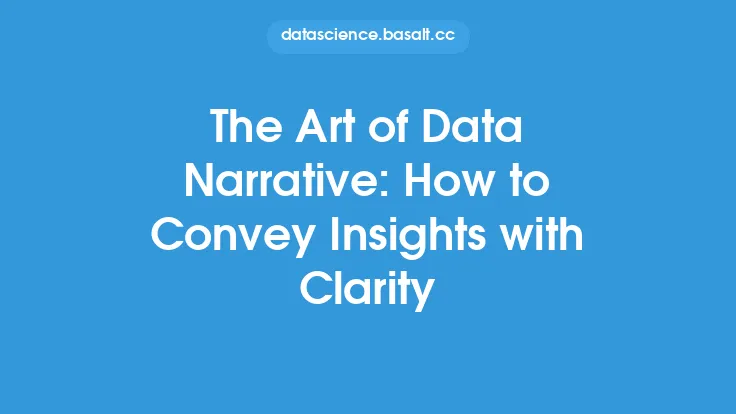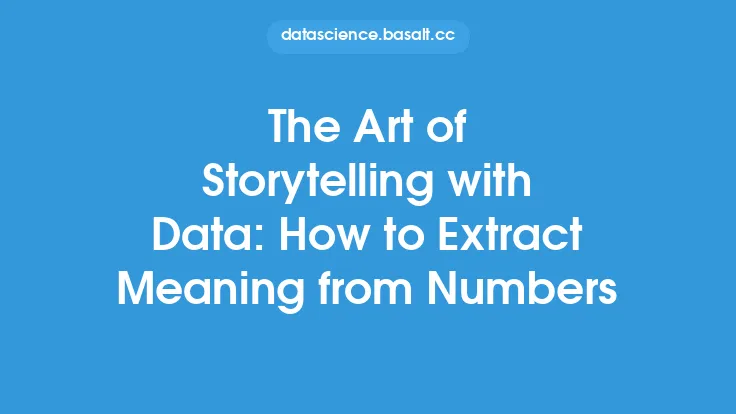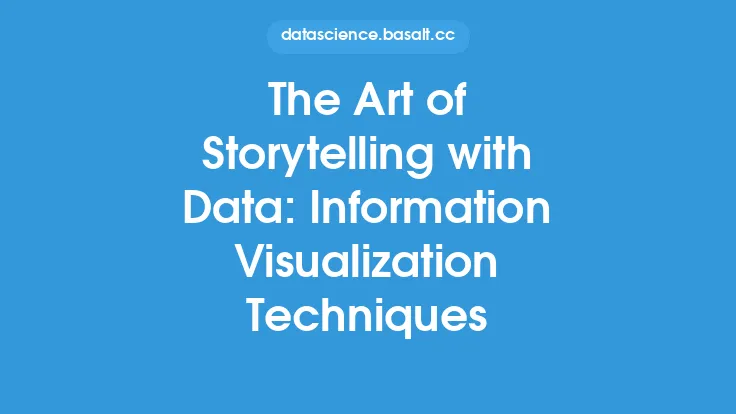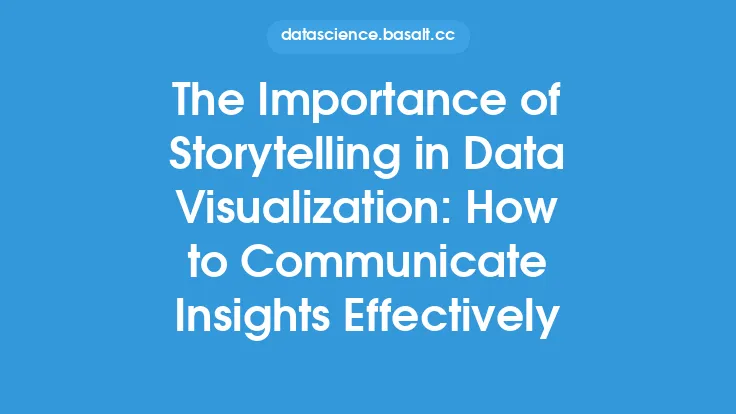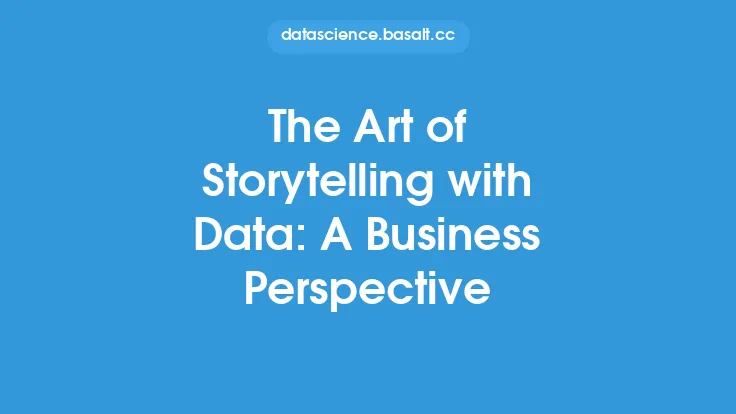Data storytelling is a crucial aspect of communicating insights to both technical and non-technical audiences. It involves presenting complex data in a way that is easy to understand, engaging, and informative. The goal of data storytelling is to convey insights and trends in a clear and concise manner, allowing stakeholders to make informed decisions. To achieve this, it is essential to have a deep understanding of the data, the audience, and the story that needs to be told.
Understanding the Audience
Before starting to tell a data story, it is vital to understand who the audience is and what they care about. Different audiences have different levels of technical expertise, interests, and goals. For example, a technical audience may be interested in the details of the data collection process, while a non-technical audience may only care about the high-level insights and recommendations. Understanding the audience's needs and preferences is crucial in tailoring the story to their interests and ensuring that the message is conveyed effectively.
Crafting a Compelling Narrative
A good data story should have a clear narrative arc, including a setup, a confrontation, and a resolution. The setup provides context and introduces the problem or question being addressed. The confrontation presents the insights and trends in the data, and the resolution provides recommendations and next steps. The narrative should be engaging, easy to follow, and free of technical jargon. It should also be supported by visualizations, such as charts, graphs, and tables, to help illustrate the points being made.
Selecting the Right Visualizations
Visualizations are a critical component of data storytelling, as they help to convey complex information in a clear and concise manner. Different types of visualizations are suited to different types of data and insights. For example, bar charts and line graphs are useful for showing trends and patterns over time, while scatter plots and heat maps are better suited to showing relationships between variables. It is essential to choose the right visualization for the story being told and to ensure that it is easy to understand and interpret.
Using Interactivity to Enhance the Story
Interactivity can be a powerful tool in data storytelling, allowing the audience to explore the data in more detail and to gain a deeper understanding of the insights being presented. Interactive visualizations, such as dashboards and interactive charts, can be used to provide additional context and to enable the audience to drill down into the data. They can also be used to provide real-time updates and to enable the audience to track changes over time.
Ensuring Clarity and Conciseness
Clarity and conciseness are essential in data storytelling, as they help to ensure that the message is conveyed effectively and that the audience is not overwhelmed by too much information. It is vital to focus on the key insights and trends in the data and to avoid unnecessary complexity. The story should be easy to follow, and the visualizations should be clear and easy to understand. It is also essential to avoid using technical jargon and to ensure that the language is accessible to a broad audience.
Best Practices for Data Storytelling
There are several best practices that can help to ensure that data stories are effective and engaging. These include:
- Keeping the story simple and focused on the key insights and trends
- Using clear and concise language and avoiding technical jargon
- Selecting the right visualizations for the story being told
- Using interactivity to enhance the story and provide additional context
- Ensuring that the story is easy to follow and that the visualizations are clear and easy to understand
- Providing recommendations and next steps to help the audience take action
Technical Considerations
From a technical perspective, data storytelling involves a range of tools and technologies, including data visualization software, programming languages, and data management systems. Some popular data visualization tools include Tableau, Power BI, and D3.js, while popular programming languages include Python, R, and SQL. Data management systems, such as relational databases and NoSQL databases, are used to store and manage the data. It is essential to have a deep understanding of these tools and technologies to create effective data stories.
Common Challenges
Data storytelling is not without its challenges. Some common challenges include:
- Ensuring that the story is engaging and easy to follow
- Selecting the right visualizations for the story being told
- Providing sufficient context and background information
- Avoiding unnecessary complexity and technical jargon
- Ensuring that the story is accessible to a broad audience
- Providing recommendations and next steps to help the audience take action
Conclusion
Data storytelling is a powerful tool for communicating insights and trends in data. By understanding the audience, crafting a compelling narrative, selecting the right visualizations, using interactivity to enhance the story, and ensuring clarity and conciseness, data stories can be effective and engaging. By following best practices and considering technical and common challenges, data storytellers can create stories that inform, educate, and inspire their audiences. Whether the goal is to communicate complex data insights to a technical audience or to provide high-level insights to a non-technical audience, data storytelling is an essential skill for anyone working with data.
